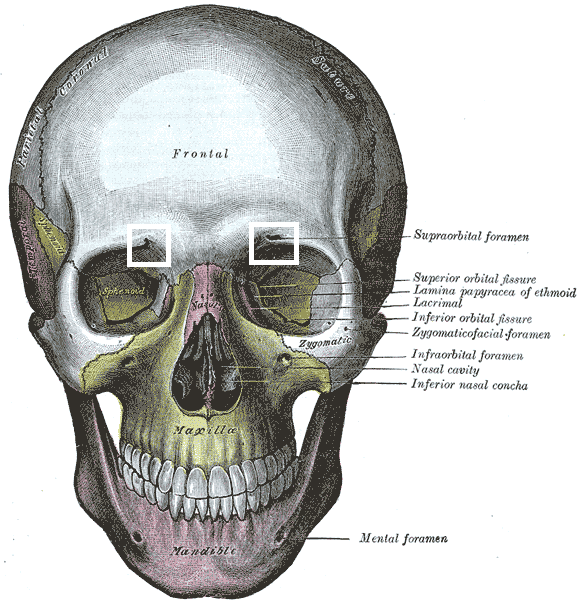The Upper Face

- Research indicates that the infraorbital foramen is frequently found lateral to the supraorbital foramen, contradicting the idea that they are aligned vertically along the medial limbus[1][3]. Specifically, the infraorbital foramen is located significantly more lateral compared to the supraorbital and mental foramina[3]. This suggests that a vertical line along the medial limbus would not accurately denote the positions of all three foramina.
- Therefore, while the supraorbital, infraorbital, and mental foramina are key anatomical landmarks, their positions are not vertically aligned as suggested. This has implications for clinical practices, such as surgical procedures and nerve blocks, where precise localization of these foramina is crucial for optimal outcomes.
- The supraorbital notch or foramen is the exit aperture for the supraorbital neurovascular bundle (NVB). While the vessels here initially lie deep in the skin, they become more superficial about 1.5 cm superior to the supraorbital foramen as they supply the forehead.
- The supratrochlear NVB lies about 8-12 mm medial to the supraorbital NVB. The vessels are similarly deep initially and gradually become more superficial as they traverse superiorly to supply the forehead.
- The supraorbital nerve, after exiting through its foramen, runs laterally and then superiorly about 1 cm medial to the temporal fusion line. It lies deep within the skin in this region.
The forehead is a tricky region to navigate. While many individuals have forehead wrinkles and lines that they would like to eradicate, there is also an unacceptable level of risk associated with filler injections into the region. This is due to the vast array of blood vessels in this area which, if impacted by filler, can cause devastating complications with blood supply. In addition, because of the tight skin and extensive movement of this area, forehead filler injections can often lead to unnatural looking results. As such, experts generally do not recommend injecting this area with filler.
The periorbital region is a broad term that refers to various areas around the eyes. Although the area to the side of the eye (the “crows feet”) is a problem area for many patients, this area is not treated with filler for similar reasons to the forehead: there are significant safety concerns and it would prove difficult to get results that appear natural. Instead, this region is a perfect place to apply Botox®. Botox® can not only reverse the appearance of wrinkles, but it also can prevent future wrinkles from forming around the eye.
The most common filler injections in the periorbital region occur in the area just above the eye (the brow), to treat a low or devolumized brow, and the region just below the eye (infraorbital region), to camouflage bags or fill hollows, called “tear troughs”. These issues can lead to a tired and aged appearance that can take away from a patient’s natural beauty. For the periorbital region, particular care must be taken to choose the correct filler. Specifically, because of the water properties of this area, a filler that doesn’t absorb too much water should be used. Injecting that filler using the tunneling cannula technique can result in a refreshed and rejuvenated appearance above and below the eye.
- Citations:
- [1] https://www.sciencedirect.com/science/article/pii/S2214854X23000262
- [2] https://www.ncbi.nlm.nih.gov/pmc/articles/PMC8450472/
- [3] https://pubmed.ncbi.nlm.nih.gov/34120334/
- [4] https://journals.lww.com/plasreconsurg/Fulltext/2007/10000/Location_of_the_Infraorbital_and_Mental_Foramen.31.aspx?generateEpub=Article%7Cplasreconsurg%3A2007%3A10000%3A00031%7C10.1097%2F01.prs.0000279558.86727.5a%7C
- [5] https://www.researchgate.net/figure/The-anatomical-variation-of-supraorbital-foramen-infraorbital-foramen-and-mental-foramen_fig2_360809937
